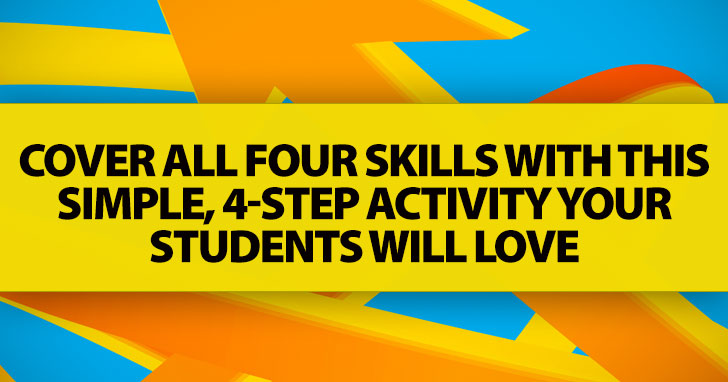A teacher’s work is never done, and the more we can multitask with our class activities, the better off both we and our students will be.
This simple activity is perfect for the teacher who wants to cover several areas of language instruction in just one activity. In short, students choose one of their interests and create a book about it using pictures and vocabulary. It works for younger students as well as adults, and you might even have classroom resources for future use when you are done. Here’s how to create this engaging and educational experience with your students.

Cover All Language Skills in an Enjoyable Way
-
1
Picture This
The activity starts with students looking through magazines for pictures that interest them. I hope you have a collection of classroom magazines on hand for your students to use in various activities. They are great for learning vocabulary, creating collages, and using for writing prompts, among many other activities. In this activity, students will look for pictures that appeal to them that they will later assemble into a book. It helps if you have magazines that cover topics of interest to your students. If you’re not sure that you do, invite students to bring in magazines that they like, even if those magazines are not in English. They will only be taking the pictures from the magazine and not the words. Make sure you warn them, however, that they will be cutting pictures from their magazine, so they should not bring something that they do not want to cut up. Students can work individually or in groups to choose their pictures. Have students choose between five and eight pictures that interest them and paste each one on to a separate piece of paper. Eventually they will compile these pages into a book.
-
2
Identify Important Vocabulary
Once your students have chosen their pictures and pasted them onto their book pages, it’s time to talk about what is in the pictures. If individual students chose their pictures, it’s best if you can talk with each person individually as well. If you had groups work together, you can have groups discuss the pictures among themselves as you move from group to group giving input. During the discussion, students should point out any important objects or elements in the pictures. You or their classmates will supply the correct vocabulary for these items, and you may want students to make a list on a separate piece of paper of these important vocabulary words.
-
3
Write It Out
This step is when the book really comes together. You will have to be involved in writing each book because it’s important that the spelling and grammar be without error in these class made books. Thus, this is a good step to do while your class is doing other, independent work. You will not, however, come up with the text that will be written. That is your students’ job. Sitting with each individual or group, have your student tell you what text should go on each page. It is up to your students whether they want to write a fictional piece or an informational piece (or even a combination of the two). Reading picture books similar to the one they are creating is a good way to prepare them for this activity. When it is time to write, students should have their list of vocabulary handy when they give you the sentence(s) for each page. You then write down what your students said correcting the grammar as you write (no need to point out to your students their grammatical mistakes at this point) and using correct spelling. Once all the pages have text on them that relates to the picture on that page, your students can assemble the book. Staples are a great go to, but you can use any binding option that works for you and your budget including three ring notebooks or a spiral binding.
-
4
Read and Read Again
Once your books are bound, your students have a reading reference that will interest them and be at their reading level. Because they chose the pictures for the book, they will be interested in the subject and, most likely, have a fair amount of previous knowledge about it. Because they gave you the sentences to write down, they will understand the grammar of what they are reading (even if you made corrections for them). Because the book is based on pictures, they will have a good picture reference for the vocabulary they learned in the book writing process. All these things combine to make an interesting and level appropriate book for your students to read. If you like, set aside a place in your classroom for these student-made books so their classmates can read them during their free time. If the exercise is particularly successful with your students, think about also setting aside space for a book making learning center. Students can choose pictures and assemble their books on their own and then come to you for help with vocabulary and the text for each page.
Not every class activity has to be complicated. In this straightforward activity, students choose pictures that appeal to them and then take the steps to transform those pictures into the text of a book – a book that interests them and that they and their classmates can read independently. It’s fun and covers discussion, vocabulary, writing, and reading in one simple and fun activity.
Have your students created their own picture books?
What was the experience like for you and your class?
P.S. If you enjoyed this article, please help spread it by clicking one of those sharing buttons below. And if you are interested in more, you should follow our Facebook page where we share more about creative, non-boring ways to teach English.







